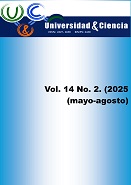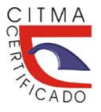Telemedicina Veterinaria: estado del arte de las innovaciones que transforman el cuidado animal
DOI:
https://doi.org/10.5281/zenodo.15588334Palabras clave:
cuidado veterinario, desarrollo tecnológico, diagnóstico remoto, salud digital, telemedicinaResumen
Introducción: la telemedicina veterinaria ha sido un tema de interés en la comunidad médica, pero también en la comunidad tecnológica y social por el impacto que puede tener en diversos ambientes que carecen de acceso a los nuevos avances y procesos de este sector. Objetivo: Revisar el estado actual de la telemedicina veterinaria en la literatura científica y el desarrollo tecnológico que ha tenido. Métodos: Se realiza una búsqueda sistemática en bases de datos académicas además de que se seleccionan artículos con base en puntos de relevancia a partir de un análisis comparativo en el contexto del uso de la telemedicina enfocado a mascotas, usando la técnica de revisión documental bajo criterios de exclusión como la actualidad de los documentos consultados y la relación del objetivo con la información analizada. Resultados: Las plataformas han evolucionado de simples consultas telefónicas a sistemas integrados que priorizan emergencias y permiten un acceso más eficiente a especialistas. Sin embargo, el uso de telemedicina en veterinaria enfrenta limitaciones, como la dificultad de realizar exámenes físicos completos y procedimientos en contacto directo, lo que puede comprometer la precisión diagnóstica. Conclusiones: Se hace énfasis en proporcionar el estado actual de los sistemas actuales orientados en la telemedicina dirigida a las mascotas o el sector veterinario de pequeñas especies. Los hallazgos sugieren e indican la necesidad de seguir avanzando en el tema, especialmente en urgencias y su clasificación pues es un tema poco explorado en veterinaria.
Descargas
Citas
Alamoodi, A. H., Garfan, S., Zaidan, B. B., Zaidan, A. A., Shuwandy, M. L., Alaa, M., ... y Alobaidi, O. R. (2020). A systematic review into the assessment of medical apps: motivations, challenges, recommendations and methodological aspect. Health and Technology, 10, 1045-1061.
Bishop, G. T., Rishniw, M. y Kogan, L. R. (2021). Small animal general practice veterinarians' use and perceptions of synchronous video-based telemedicine in North. America during the COVID-19 pandemic. Journal of the American Veterinary Medical Association, 258(12), 1372-1377.
Cabezas, A. M., Macias, A. D. L. T., Cabeza, J. M. y Vergara, J. T. (2023). Analysis and Implementation of a Satellite Tracking System applied to pets using free software with GPS and GSM technology. Espirales Revista Multidisciplinaria de investigación, 7(47), 48-56.
Déry, J., Ruiz, A., Routhier, F., Bélanger, V., Côté, A., Ait-Kadi, D. ... y Lamontagne, M. E. (2020). A systematic review of patient prioritization tools in non emergency healthcare services. Systematic reviews, 9, 1-14.
Dullayachai, K. y Changkamanon, A. (2020, March). The Performance of Electronic Veterinary Management. In 2020 Joint International Conference on Digital Arts, Media and Technology with ECTI Northern Section Conference on Electrical, Electronics, Computer and Telecommunications Engineering (ECTI DAMT & NCON) (pp. 11-14). IEEE.
Homerosky, E. R. y Ware, T. (2023, August). Veterinary telemedicine: Tips for expanding your practice virtually. In American Association of Bovine Practitioners Conference Proceedings (pp. 90-91).
Huang, E. Y., Knight, S., Guetter, C. R., Davis, C. H., Moller, M., Slama, E. y Crandall, M. (2019). Telemedicine and telementoring in the surgical specialties: a narrative review. The American journal of surgery, 218(4), 760-766.
Huang, D. H. y Chueh, H. E. (2021). Chatbot usage intention analysis: Veterinary consultation. Journal of Innovation & Knowledge, 6(3), 135-144.
Huynh, M. (2019). Smartphone-based device in exotic pet medicine. Veterinary Clinics: Exotic Animal Practice, 22(3), 349-366.
Hwang, S., Song, Y. y Kim, J. (2021). Evaluation of ai-assisted telemedicine service using a mobile pet application. Applied Sciences, 11(6), 2707.
Iqbal, N., Jamil, F., Ahmad, S. y Kim, D. (2021). A novel blockchain-based integrity and reliable veterinary clinic information management system using predictive analytics for provisioning of quality health services. Ieee Access, 9, 8069-8098.
Islam, F., Sabbe, M., Heeren, P. y Milisen, K. (2021). Consistency of decision support software-integrated telephone triage and associated factors: a systematic review. BMC medical informatics and decision making, 21, 1-10.
Jones Diette, J. S., Dean, R. S., Cobb, M. y Brennan, M. L. (2019). Validation of text- mining and content analysis techniques using data collected from veterinary practice management software systems in the UK. Preventive veterinary medicine, 167, 61-67.
Lambert, A. A., Jk, G., Prasath, R. y Krishnan, H. (2023, April). Design and Implementation of a Pet Care and Tracking System. In 2023 Eighth International Conference on Science Technology Engineering and Mathematics (ICONSTEM) (pp. 1-5). IEEE.
Lareyre, F., Chaptoukaev, H., Kiang, S. C., Chaudhuri, A., Behrendt, C. A., Zuluaga, M. A. y Raffort, J. (2022). Telemedicine and digital health applications in vascular surgery. Journal of Clinical Medicine, 11(20), 6047.
Mekha, P. y Osathanunkul, K. (2020, March). Web application for sick animals health monitoring system. In 2020 Joint International Conference on Digital Arts, Media and Technology with ECTI Northern Section Conference on Electrical, Electronics, Computer and Telecommunications Engineering (ECTI DAMT & NCON) (pp. 123-127). IEEE.
Montano, I. H., de la Torre Díez, I., López Izquierdo, R., Villamor, M. A. C. y Martín Rodríguez, F. (2021). Mobile triage applications: a systematic review in literature and play store. Journal of Medical Systems, 45(9), 86.
Ng, L. L., Hafit, H., Aziz, R. A., Azemi, N. L. M. y Anurddin, S. H. (2023). A Rule-based Mobile Application for Diagnosing Pet Disease: Design and Implementation. JOIV: International Journal on Informatics Visualization, 7(2), 463-470.
Roca, R. Y. y McCarthy, R. J. (2019). Impact of telemedicine on the traditional veterinarian-client-patient relationship. Topics in companion animal medicine, 37, 100359.
Shahin, K., Pearl, D. L., Martinko, C., Berke, O. y O’Sullivan, T. L. (2022). Examining the differential use of a North American animal poison control call center by veterinarians and the public for dog-related calls. PLoS one, 17(11), e0276959.
Shelke, T., Shahu, S., Godar, A., & Talewar, M. y Thaker, J. (2022). Design and Development of Android Based Animal Healthcare Application. International Journal for Research in Applied Science and Engineering Technology. 10. 1774-1777. 10.22214/ijraset.2022.40963.
Springer, S., Lund, T. B., Corr, S. A. y Sandøe, P. (2024). Seeing the benefits, but not taking advantage of them: Dog and cat owners’ beliefs about veterinary telemedicine. Veterinary Record, 194(5).
Vijay, D. F. B., Quishpe, E. I. L., Vizuete, D. C. M., Aleaga, I. S. P. y Hidalgo, C. J. M. (2024). Eficacia de diferentes técnicas de triaje en la gestión de departamentos de urgencias. Revista GICOS, 9(1), 82-101.
Xie, H., Li, T. y Fong, S. (2022, August). Virtual Interactions of Companion Pet Effects for Remote Pet Owners. In Proceedings of the 2022 5th International Conference on Big Data and Internet of Things (pp. 64-69).
Zablah, J. I., Loureiro, A. G., Diaz, S., Molina, Y., Cardona, A., Agudelo, C. A. ... y Valle Reconco, J. A. (2022). Doctor 1847: Software multiplataforma y multidispositivo para facilitar el autodiagnóstico, triaje y seguimiento de pacientes sospechosos y confirmados por SARS-CoV-2. Revis Bionatura, 7(15) 17.
Publicado
Cómo citar
Número
Sección
Licencia
Derechos de autor 2025 Universidad & ciencia

Esta obra está bajo una licencia internacional Creative Commons Atribución-NoComercial-CompartirIgual 4.0.





















